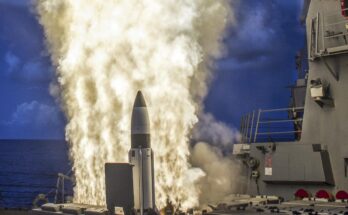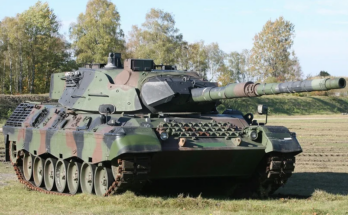Japan remains open to partnership on its F-X Future Fighter program with both the United States and the United Kingdom, per a statement by its Acquisition, Technology & Logistics Agency (ATLA). An earlier report in the Japanese media indicated that the government was leaning heavily toward working with the U.S. on the project, but instead a partnership decision remains open-ended, with talks between the prospective countries ongoing.
ATLA officials are on record as stating to Jane’s that they hope to determine a preliminary framework detailing a partnership strategy by December.
Japan plans to develop and build a next-generation fighter – tentatively designated the F-3 – to replace its aging inventory of Mitsubishi F-2A multirole combat aircraft around the early 2030s.(The F-2A is a modified knock‑off of the Lockheed Martin F-16C Block 40.)
Previously it had weighed several options in pursuing a new fighter, including development of a new aircraft with a foreign partner, upgrading a current type, or importing an existing foreign-designed platform. Tokyo had earlier set its sights on the stealth next-generation F-22 from the U.S., but Washington flatly refused to sell the fighter to even its closest allies (such sales are restricted under the Obey Amendment, House Amendment 295 to H.R.2266).
The decision to bypass these alternatives in favor of buildings its own fighter was confirmed by Japan’s Ministry of Defense on February 1, 2019.
Japan seeks to retain and grow its industrial aviation know-how through the F-X fighter project, with Mitsubishi Heavy Industries likely playing a leading role.
The U.K. is pursuing its own future combat aircraft, with a “sixth-generation” fighter design being developed to meet long-term Royal Air Force (RAF) requirements. The fighter concept – called “Tempest” – involves a twin-engine, delta-winged, low-observable fighter operating with support from unmanned platforms – referred to by former Defense Secretary Gavin Williamson as “loyal wingmen,” or swarming systems – expected to enter service in the early-to-mid 2020s.
The aim for the British MoD is to develop a sophisticated future fighter to replace the RAF’s Eurofighter fleet in the 2040s, at which time they will serve alongside its F-35 Lightning IIs.
The British program involves BAE Systems, Leonardo’s U.K. division, MBDA, Rolls-Royce, Saab, the government’s DE&S agency, and the RAF’s Rapid Capabilities Office.
UK still in the game for Japan fighter partnership https://t.co/3k668TF1Sv
— EuroAsiaSecurityForum (@EuroAsiaSecFor) March 12, 2020
On the U.S. side, defense and aerospace giants Boeing and Lockheed Martin are both expressing interest in assisting with Japan’s F-X project.
Going forward, the Ministry of Defense is standing up a dedicated division to support indigenous development of the F-X fighter. This division is being established in April 2020, thus officially kicking off project development. Defense Ministry conceptual photos indicate a very large platform with a larger weight than the F-22 Raptor. The main focus will be on achieving long-range endurance and fielding a large internal weapons payload.
Under Japan’s fiscal year 2020 defense budget, a total of JPY28 billion ($265 million) has been earmarked toward the F-X development program.

Dan Darling is Forecast International’s director of military and defense markets. In this role, Dan oversees a team of analysts tasked with covering everything from budgeting to weapons systems to defense electronics and military aerospace. Additionally, for over 17 years Dan has, at various times, authored the International Military Markets reports for Europe, Eurasia, the Middle East and the Asia-Pacific region.
Dan's work has been cited in Defense News, Real Clear Defense, Asian Military Review, Al Jazeera, and Financial Express, among others, and he has also contributed commentary to The Diplomat, The National Interest and World Politics Review. He has been quoted in Arabian Business, the Financial Times, Flight International, The New York Times, Bloomberg and National Defense Magazine.
In addition, Dan has made guest appearances on the online radio show Midrats and on The Media Line, as well as The Red Line Podcast, plus media appearances on France 24 and World Is One News (WION).




